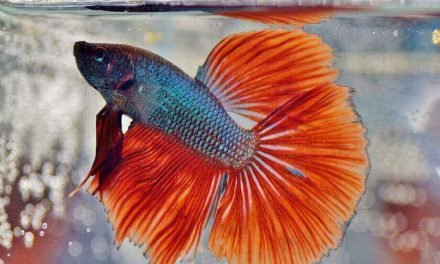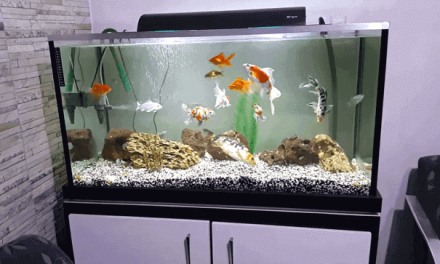Planning to introduce your fishes to a new member? But have concerns such as will they be comfortable? Here are a few of the steps that will surely give you the right way for putting new fish in a tank. We all know moving to a new city or home is quite challenging for us. The same is the case with the fishes. They too feel stress if brought in a different environment.
The Main Problem with the fishes is the change in the quality of water, which can take even days for the fishes to set themselves. So if you are one of them who are planning for a new fish, here are a few things you should take care of.
Introducing a New Fish in the Tank
Trying to introduce a new fish in your existing tank, make sure that your old fishes, as well as the new one, do feel relaxed and comfortable with the situation. Here are a few tips that you can help you to achieve pleasant results –
- Try to use a quarantine tank for a few days. A quarantine tank is designed in such a way to isolate the fishes from the others at the same time also prevent the spreading of unwanted diseases among the fishes.
- Try to design your aquarium in such a way that it has plenty of places to hide. New fishes tend to stay in such dark places for a few days before adjusting themselves in the new environment. Provide them with shelter areas such as plants and rocks. Such an environment will reduce the stress of your new friend.
- Trying to add more fishes is also a proven technique to reduce stress levels. Such fishes feel secure and are less harassed by the older fishes.
- Always feed the fishes as soon as you introduce them to new members. Doing so diverts their attention from the new fish.
- Rearrange the decoration of your aquarium. By doing so your old fishes will be busy adjusting themselves with the new changes hence your new fish will get plenty of time to set accordingly.
Some Important Things to Consider Before Putting a New Fish in a Tank
Before adding new fish to an established tank make sure you take care of the below mention factors.
Compatibility of Size:
Buy such fish whose size is nearly the same as your existing fishes. This reduces the risk of smaller fish eaten by your larger fish. Also, ask the pet shop owner that how big this particular breed can grow. Some fishes grow very little while others can even grow double or triple as compared to their initial size.
Eating Habits of Your new Fish:
Remember that the eating habits of new fish should be the same as your old fish. This will maintain balance in the aquarium concerning food.

Some fishes feed on frozen food, pellets, etc. While some other fishes tend to eat the smaller fishes. So make sure that you have full knowledge of your new fish.
Nature of Fish:
Make sure you know whether your new fish is peaceful or aggressive. Buying an aggressive fish will create problems for your shy fishes. You may not like seeing harassment or fighting of the fishes in your lovely aquarium. Also, make sure that whether the new fish is territorial or not.
Research Well:
This is the most important step if you are planning to introduce a new fish in your tank. The internet these days is the best source that can easily guide you with such information. Do not believe what the owner of the shop says, as they have to sell off their products. Try to experiment with it yourself.
Available Space in Your Aquarium:
Overcrowding of the fishes in your aquarium may also create stress and aggression within the fishes. Make sure each fish have their own space to relax and swim throughout the day. Remember that each fish loves to make its territory. For example black ghosts, clown loaches tend to stay near driftwood while cicilis prefer small caves and rocky areas of your aquarium. So try such fishes that choose different areas of your aquarium.
There is a rough rule for the same that each gallon of water is enough for a fish of 1 inch in size. For example, if your aquarium can accumulate 15 gallons of water means you can easily keep 15 fishes of 1-inch size. Thus your fish can easily swim and will also get enough oxygen to survive peacefully.

Feeding Behaviour of the Fish:
Plan your tank in such a manner that your fishes acquire all the level of your aquarium evenly. There are mainly 3 types of fishes based on their feeding habits. Surface feeders, who feeds from the top, following the mid-level feeders and finally the bottom-feeders which eats up the settling down food. Such balance gives them a peaceful environment to live.
Some other questions that you need to ask from your pet shop owner:
- Will your existing fish get along with your new fish?
- How many new fish can accommodate in your tank?
- How long will the fish live?
- How long the fish is your store?
- Part of the aquarium this fish will occupy?
- Habitat the fish will prefer?
Transporting of Your Fish:
So now you have selected your desired fish. The pet store owner gives you the fish in a bag with partially filled water and the rest with air, tightly packed with a rubber band. Remember to put them in such bags that can block the light.
Transporting the fishes in dark is often suggested as it reduces stress in the fishes. Also do not leave them in your car while you are away as a closed car increases the temperature inside the car that can be dangerous for the fish. If possible shop for the fish in the last and drive straight to your home.

Introducing Your Home to the Fish:
Finally, the fish has entered your home. Make sure the health of the fish is fine before transferring fish to the tank. These changes in the environment are not easy for fishes. You have to check the temperature of the water, its Ph level also before putting new fish in a tank. Failing to cope with the new environment is the common cause for the death of the new fishes.
It’s good to have an Extra Tank:
Keeping the new fish in a separate tank before introducing them to your original tank is the best way to make them comfortable. A new fish in the new tank with all the old fishes have to bear two problems firstly, the new environment and secondly, resistance from the old fishes. By using an extra tank your fish initially have to deal with only one problem at a time.
The Transfer Process:
Follow the below mention steps for adding new fish in your tank successfully –
Step: 1
Check the water quality of the tank. Check for ph level, chlorine, and ammonia levels. The quantity of chlorine and ammonia should be zero. In case you found any amount of ammonia or chlorine in the water, remove them with your water purifying medicines.
Step: 2
Make sure to turn off the lights of your aquarium. This reduces the stress of your new fish. You may also dim the lights of your room if necessary.
Step: 3
You should place the sealed bag in which you brought your fish into the tank for about 10 minutes. This process helps to maintain a similar temperature between the two.
Step: 4
Now open the bag and hold from its top. Fold some of the open areas of the bag and let it float on the surface of the tank.
Step: 5
Now compare the PH level of the two water and note down the difference. The difference should be minimum ranging from 0.2-0.5. In case they are not followed step 6.
Step: 6
With the help of a small cup add water from the tank to the bag until the Ph level in both the water is equal. Remember after adding a water cup wait for 15 minutes to check the ph level of the bag. If found any difference, repeat the same procedure.
Step: 7
After achieving the same Ph level with the help of a fishnet carefully lift the fish and leave it into the aquarium.
Step: 8
Discard the bag and the remaining water. Remember not to put the remaining water off the bag into the aquarium. If you feel that the water level of your tank has dropped, use dechlorinated tap water.
Step: 9
Do not switch on the lights for a few hours. This makes it easier for the fish to adjust itself in the new environment.
Step: 10
If you feel add some amount of food into the tank. It will also help the new fish to lessen its stress.
Conclusion
Thus these are the proven tips for putting new fish in a tank. The above mention procedure will reduce the stress of your new friend. Maintaining a beautiful and healthy aquarium often needs patience and knowledge. Make sure to watch the activities of the tank for a few days. If you feel that there is any problem replace the fish with a new one.
Apart from this make sure to go with the compatibility charts of the fishes. This will help you to choose the best fish for your tank without any concerns.















